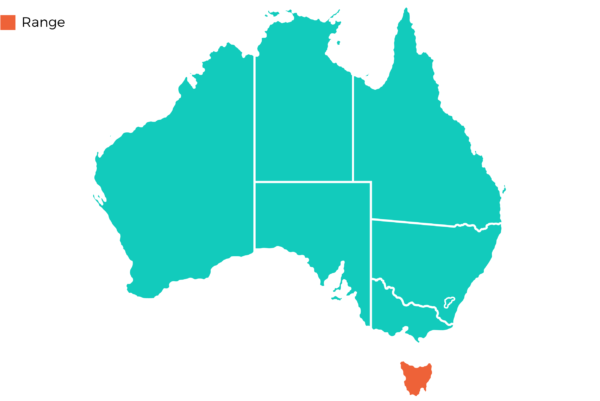Description
Eastern Quolls have a tapering snout, short legs, and erect ears. They can be distinguished from all other species of Quoll by the presence of only four toes, rather than five, on the hind feet, lacking the hallux (big toe). They have a thick coat covered by white spots, that can be either light fawn or near black, with off-white underparts stretching from the chin to the underside of the tail.
Distribution
Only found in Tasmania, mid 1960’s they became extint on mainland Australia.

Lifespan
4 - 7 years.
The Eastern Quoll is listed as Endangered on the IUCN list.
Size
About the size of a small domestic cat, males approx 53 - 66cm long & weighing 1.1kgs. Females are smaller, 48-58cm and weighing 0.7kgs.
Diet
Quolls are mostly carnivorous. They primarily eat insects, birds, frogs, lizards and fruit.
Habitat
Inhabits rainforest, heathland, alpine areas, and scrub below 1,500 metres.
Breeding
The Eastern Quolls' breeding season begins in early winter. The oestrus cycle lasts 34 days, although most individuals mate during their first cycle of the year. The female gives birth to up to twenty young after a gestation period of 19 to 24 days. Of these, the first to attach themselves to the available six teats will be the only survivors.
斑尾虎鼬 | フクロネコ | 동부주머니고양이